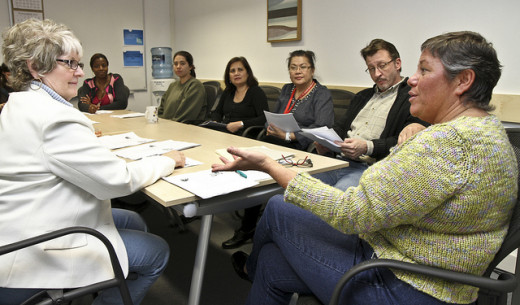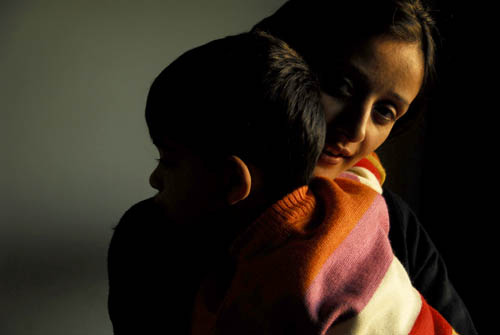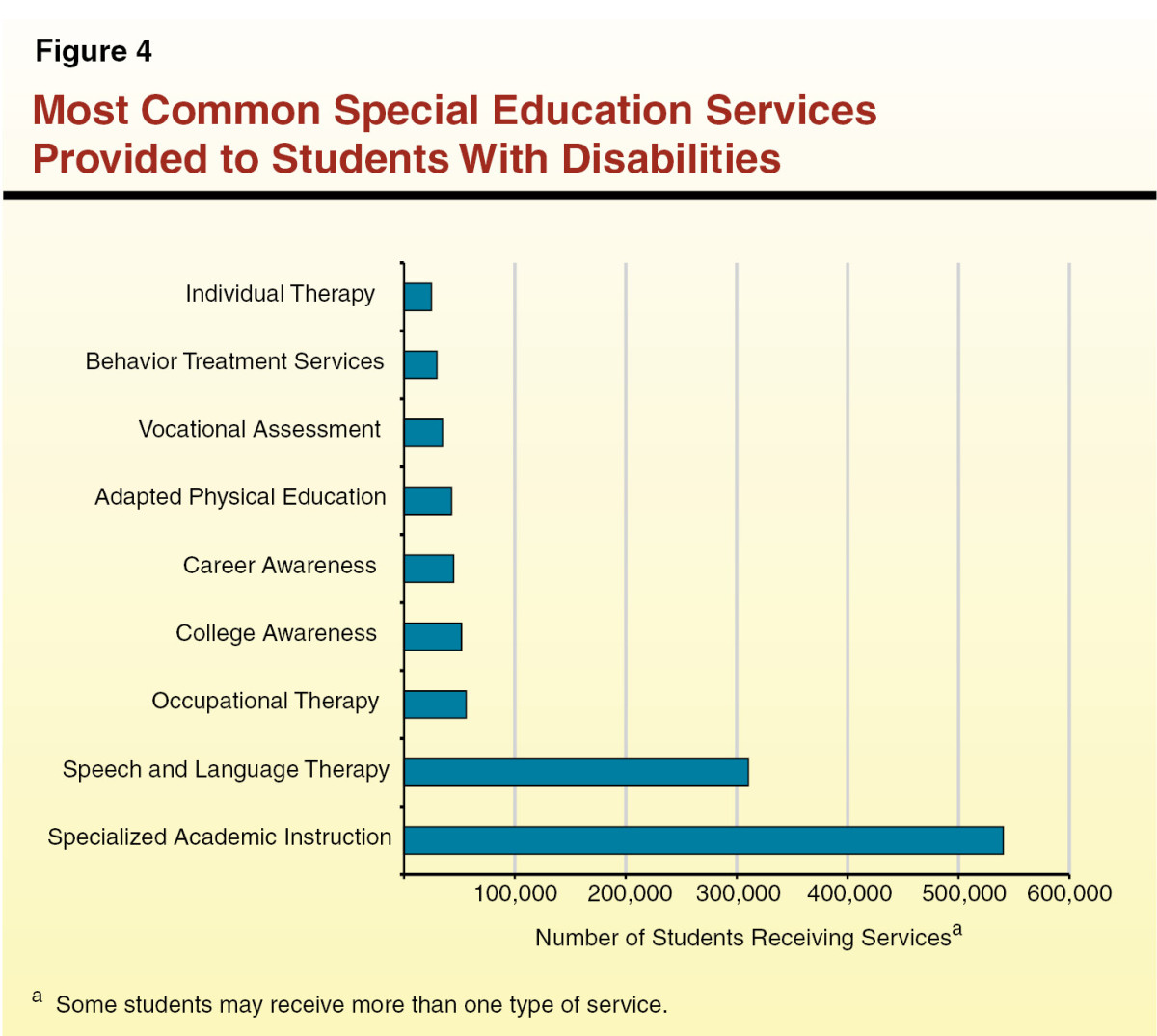Plan of Action for Addressing Parental Violence

Aggressive parents have aggressive children. Not only are children taking from the examples they have at home, but they are reaching out to express themselves in any way they can. This has drastic effects not only on those in the home, but also on all others outside the home, such as the children's teacher, other students and other families. To read about the Effects of Aggressive Parenting on others outside the home and in the related Children's Lives inside the home, you'll have to read the articles.
With proper training and support for parents, teachers, and students, the cycle of violence in homes can drastically decrease if not stop altogether. Let's look at a Plan of Action for addressing parental violence.
Quick Poll
What interested you in this article?
Plan of Action for Parents
Parent Awareness of Words and Actions
One particular study in this area of research suggested using filial therapy to teach parents “how to create a nonjudgmental, understanding, and accepting environment, which enhances the parent-child relationship, thus facilitating personal growth and change for the child and parent” (Kinsworthy, S. & Garza, Y., 2010).
For children experiencing violence in the home, the most important part of rebuilding the home is understanding the point of view of the child and listening to their feelings in order to draw closer to them. After receiving filial therapy, parents were reported to have experienced “increased warmth and trust in the child–parent relationship, changed parenting style, and decreased parental stress” (2010).
Within a ten week period, parents are taught how to communicate with their children, use play therapy to understand the thoughts and feelings of their children and learn how to rebuild the parent-child relationship. “Family therapy often requires a substantial investment of time and money. In contrast, filial therapy is more time and cost effective, and gives parents the tools they need to address future parenting issues.
This important concept for developing parent-child relationships that were once broken, can very well break the cycle of violence in families.

Emotional Support for Parents
The filial therapy program specifically addresses parental confidence levels in their own parenting skills. The program taught parents that it was possible to make the need change to bring their families back together again. They were given the confidence that they could break the cycle of violence themselves.
“Mothers were also informed that the follow-up program would involve in-home assessments of family functioning, for which there would be financial compensation, and that there was a chance that the mother could have someone come to her home to work with her on ways to help her children.” This support brought many families back together and strengthened them so this didn’t have to happen again.
Training for Parents in Behavior Management
There are plenty of books and programs out there telling parents how to better parents their children. They tell parents specifically what to say and what to do in just about every situation. Unfortunately, they are all different and have different opinions on what is the right way to parent. However, “personhood sets the tone for parenthood. In other words, the kind of person you are will have a longer-lasting effect on your children than your parenting techniques” (Boa and Turner, 2006).
Project Support is actually a program specifically designed to help parents handle conduct problems in their children. This program was created purposely to target children exposed to intimate partner violence at home and help the parents make the necessary changes to be the parents they could be.
“Each year in the United States, an incident of severe intimate partner violence (IPV) occurs in the families of over 7 million children” (Jouriles, McDonald, Rosenfield, Stephens, Corbitt-Shindler, & Miller, 2009). It is important that programs are provided to teach parents not only how to reestablish that lost parent-child relationships, and to support them emotionally through the process, but they need to be retrained on how to discipline their children appropriately and in a healthy manner. This program does just that.
“Project Support is expected to reduce conduct problems among children in families characterized by IPV . . . (reducing inconsistencies and harshness). The first component of the intervention, teaching mothers child management skills . . . The second component, providing instrumental and emotional support” (2009).
Research shows that most parents want to be good parents. In order to do this however, they need support, training, and an awareness of the effects of their parenting on their children. Project Support provides just those things to make parents aware of the violent behaviors in the home, help them to change as well as provide them the needed emotional support that allows them to believe they can succeed. This program also gives parents the ability to create relationships with their children. By admitting to the truth and being willing to change, these parents are creating a new future for their children and themselves.
“Truth is the basis for social order. Without truth, there can be no trust, and trust is what cements human relationships. Trust must be given and received” (Boa & Turner, 2006).

Plan of Action for Teachers
Changing Teacher Behaviors and Perceptions
Just as parents need to be made aware of the actions that are affecting their children, teachers need to made equally aware of what actions from them will help or hurt the children coming into their classrooms from these situations. Perception is also a huge factor when it comes to teachers. The perception a teacher may have about children from certain situations may vastly change the way the children are treated and educated.
“Such factors as the consistent use of reinforcement and feedback, clear communication of academic expectations and the management and use of instructional time have been identified as important factors in improving student, teacher and subsequent school performance” (Rutter, Maughan, Mortimore & Ouston, 1979).
The first step towards educating teachers about the problem is to make them aware of the problem at hand. After informing teachers better about the problem, a solution can then be found. Teachers can be taught how to develop trust relationships with their students, how to truly listen and understand more than math problems and science questions from their students, and how to teach their students conflict resolution strategies for handling their own problems as well as other violent situations. It is possible to be the person who teaches a child that they are okay and they don’t have to be that way. Teachers can make a difference if they simply have the know how and the desire to try and reach out to the student sin their classrooms.
Enforcing High Expectations for Academic Achievement and Social Behaviors
“The school-based development of expectations for academic and social behaviour and the clear communication of those expectations to the school community have been consistently identified as characteristics of effective schools” ((Rutter, Maughan, Mortimore & Ouston, 1979).
Just like adults need motivation and goals to succeed, students need expectations to reach toward. When teachers set high expectations for their students and are consistent in upholding them, students will strive to meet those expectations and more than likely extend past them.
Children thrive on positive reinforcement and those that come to trust the adult instructing them will be the most vulnerable ones to learning.
It’s difficult to know why some schools have excellent behavior management and some schools don’t. In Educational Studies, research was completed on what kind of programs were best for solving this problem in schools. A school-wide encouragement-based program called the Managing Student Behavior (MSB) Program was developed that encapsulated all of these characteristics for a successful behavior management program in schools.
“The MSB programme consists of a series of workshop sessions on topics related to preventing and responding to behaviour management problems. Topics include: analyzing disruptive incidents, being positive in the classroom, communication skills, behavioural limit-setting and conflict resolution strategies. A second stage includes the development of a school policy for the management of student behaviour which is then implemented and monitored on a school-wide basis by a behaviour management committee. A major aim of the programme is to increase teachers' awareness of the range of skills at their disposal for effective classroom management and to faciliate the integration of these skills into teaching practice. The programme reflects the extensive body of research in the areas of classroom management in the USA.” (Bain & Houghton, 1991)
As long as a school-wide program is chosen, really adopted and maintained school-wide, and used consistently, one simply has to be chosen.

Plan of Action for Children
Counseling and Emotional Support
“Domestic violence can leave lasting psychological, cognitive, emotional, and physical wounds” (Kinsworthy & Garza, 2010). What children need most is not a program of strategies, videos or worksheets. “Children often fall victim to the dynamics of domestic violence causing devastating effects to a broad range of their developmental milestones” (2010). These children need caring adults in their lives that will listen, understand and can be trusted.
The best way to provide this to children would be a parent supported program where parents were taught how to listen to their kids and better relate to them, while also providing the kids with an environment where they can develop relationships with other adults. It really is that simple. Children just need to know that they are real people that deserve respect, and have positive role models once again to help carry them through the rough times and model after in difficult situations. They need a caring ear and warm shoulder.
Related References
A poor-sport parent is ruining morale on the freshman basketball team. (1996).Curriculum Review, 35(7). Retrieved June 9, 2010, from the Academic Search Complete Database at Liberty University: http://web.ebscohost.com.ezproxy.liberty.edu:2048/ehost/detail?vid=4&hid=9&sid=37123174-28ee-47e0-9197-3b18ca5c0c26%40sessionmgr13&bdata=JnNpdGU9ZWhvc3QtbGl2ZSZzY29wZT1zaXRl#db=a9h&AN=9603141979.
Bain, A. & Houghton, S. (1991). The effects of a school-wide behaviour management programme on teachers’ use of encouragement in the classroom. Educational Studies, 17(3). Retrieved June 9, 2010, from the Academic Search Complete Database at Liberty University: http://web.ebscohost.com.ezproxy.liberty.edu:2048/ehost/detail?vid=14&hid=104&sid=1db389de-b76a-450b-aa86-eab2d65b2812%40sessionmgr112&bdata=JnNpdGU9ZWhvc3QtbGl2ZSZzY29wZT1zaXRl#db=a9h&AN=9707220906.
Daily Mail Reporter. (2008). The aggressive parents who bring shameful behavior into school sports. Retrieved June 9, 2010, from the mail Online Web site: http://www.dailymail.co.uk/news/article-1090407/The-aggressive-parents-bring-shameful-behaviour-school-sport.html.
Duman, S., & Margolin, G. (2007). Parents' aggressive influences and children's aggressive problem solutions with peers. Journal of Clinical Child & Adolescent Psychology, 36(1), 42-55. Retrieved June 9, 2010, from the Academic Search Complete Database at Liberty University: http://web.ebscohost.com.ezproxy.liberty.edu:2048/ehost/pdfviewer/pdfviewer?vid=2&hid=104&sid=1db389de-b76a-450b-aa86-eab2d65b2812%40sessionmgr112.
Edmonds, R. (1982). Programs of school improvement: an overview. Educational Leadership, 40(3), 4-12. Retrieved June 12, 2010, from the Academic Search Complete Database at Liberty University: http://web.ebscohost.com.ezproxy.liberty.edu:2048/ehost/pdfviewer/pdfviewer?vid=11&hid=109&sid=bc694de5-ed33-4e9b-8b3d-29995da64998%40sessionmgr114.
Foster, E. M., Jones, D. E., & the Conduct Problems Prevention Research Group. (2005). The high costs of aggression: Public expenditures resulting from conduct disorder. American Journal of Public Health, 95, 1767–1772. Retrieved June 10, 2010, from the Academic Search Complete Database at Liberty University: http://web.ebscohost.com.ezproxy.liberty.edu:2048/ehost/pdfviewer/pdfviewer?vid=3&hid=109&sid=bc694de5-ed33-4e9b-8b3d-29995da64998%40sessionmgr114.
Graham-Bermann, S. A., & Hughes, H. M. (2003). Intervention for children exposed to interparental violence (IPV): Assessment of needs and research priorities. Clinical Child and Family Psychology Review, 6, 189–204. Retrieved June 19, 2010, from the Academic Search Complete Database at Liberty University: http://web.ebscohost.com.ezproxy.liberty.edu:2048/ehost/pdfviewer/pdfviewer?vid=19&hid=109&sid=f9a93fb4-3ff2-42db-9cc0-37c8ad63d56a%40sessionmgr104.
Jouriles, E. N., McDonald, R., Rosenfield, D., Stephens, N., Corbitt-Shindler, D., Miller, P. C. (2009). Reducing Conduct Problems Among Children Exposed to Intimate Partner Violence: A Randomized Clinical Trial Examining Effects of Project Support. Journal of Consulting & Clinical Psychology, 77(4), 705-717. Retrieved June 9, 2010, from the Academic Search Complete Database at Liberty University: http://web.ebscohost.com.ezproxy.liberty.edu:2048/ehost/detail?vid=17&hid=109&sid=f9a93fb4-3ff2-42db-9cc0-37c8ad63d56a%40sessionmgr104&bdata=JnNpdGU9ZWhvc3QtbGl2ZSZzY29wZT1zaXRl#db=a9h&AN=43729062.
Kinsworthy, S. and Garza, Y. (2010). Filial therapy with victims of family violence: A phenomenological study. Journal of Family Violence, 25(4), 423-429. Retrieved June 10, 2010, from the ERIC Database at Liberty University: http://web.ebscohost.com.ezproxy.liberty.edu:2048/ehost/detail?vid=9&hid=109&sid=f9a93fb4-3ff2-42db-9cc0-37c8ad63d56a%40sessionmgr104
Lasley, T.J. & Wayson, W.W. (1982). Characteristics of schools with good discipline. Educational Leadership, 40(3), 28-31.
Lieberman, A. F., Van Horn, P., & Ippen, C. G. (2005). Toward evidence-based treatment: Child–parent psychotherapy with preschoolers exposed to marital violence [Abstract]. Journal of the American Academy of Child & Adolescent Psychiatry, 44, 1241–1248. Retrieved June 11, 2010, from the Academic Search Complete Database at Liberty University: http://web.ebscohost.com.ezproxy.liberty.edu:2048/ehost/results?vid=20&hid=109&sid=f9a93fb4-3ff2-42db-9cc0-37c8ad63d56a%40sessionmgr104&bquery=(Toward+evidence-based+treatment%3a+Child%e2%80%93parent+psychotherapy+with+preschoolers+exposed+to+marital+violence.)&bdata=JmRiPWE5aCZ0eXBlPTEmc2l0ZT1laG9zdC1saXZlJnNjb3BlPXNpdGU%3d.
Loeber, R., & Hay, D. (1997). Key issues in the development of aggression and violence from childhood to early adulthood. Annual Review of Psychology, 48, 371–410. Retrieved June 11, 2010, from the Academic Search Complete Database at Liberty University: http://web.ebscohost.com.ezproxy.liberty.edu:2048/ehost/pdfviewer/pdfviewer?vid=23&hid=109&sid=f9a93fb4-3ff2-42db-9cc0-37c8ad63d56a%40sessionmgr104.
Moffitt, T. E. and Caspi, A. (1998). Annotation: Implications of violence between intimate partners for child psychologists and psychiatrists. Journal of Child Psychology & Psychiatry & Allied Disciplines, 39(2). Retrieved June 10, 2010, from the ERIC Database at Liberty University: http://web.ebscohost.com.ezproxy.liberty.edu:2048/ehost/pdfviewer/pdfviewer?vid=4&hid=9&sid=37123174-28ee-47e0-9197-3b18ca5c0c26%40sessionmgr13.
Moylan, C., Herrenkohl, T., Sousa, C., Tajima, E., Herrenkohl, R., and Russo, M. (2010). The effects of child abuse and exposure to domestic violence on adolescent internalizing and externalizing behavior problems. Journal of Family Violence, 25(1), 53-63. Retrieved June 9, 2010, from the ERIC Database at Liberty University: http://web.ebscohost.com.ezproxy.liberty.edu:2048/ehost/detail?vid=14&hid=109&sid=f9a93fb4-3ff2-42db-9cc0-37c8ad63d56a%40sessionmgr104.
O’Keefe, M. (1996). The differential effects of family violence on adolescent adjustment. Child & Adolescent Social Work Journal, 13(1), 51-68. Retrieved June 10, 2010, from the ERIC Database at Liberty University: http://web.ebscohost.com.ezproxy.liberty.edu:2048/ehost/pdfviewer/pdfviewer?vid=7&hid=9&sid=37123174-28ee-47e0-9197-3b18ca5c0c26%40sessionmgr13
Perrott, E. (1982). Effective Teaching. New York: Longman.
Primary Teachers. (2009). Staffroom. 38-39. Retrieved June 9, 2010, from the Academic Search Complete Database at Liberty University: http://web.ebscohost.com.ezproxy.liberty.edu:2048/ehost/pdfviewer/pdfviewer?vid=4&hid=9&sid=5c38c2fe-b42a-4c30-b5ff-44598145fe95%40sessionmgr12.
Reichenheim, M., & Hasselmann, M. (2004). Parental violence and the occurrence of severe and acute malnutrition in childhood. Journal of Epidemiology & Community Health, 1(58). Retrieved June 10, 2010, from the ERIC Database at Liberty University: http://web.ebscohost.com.ezproxy.liberty.edu:2048/ehost/resultsadvanced?vid=2&hid=104&sid=e6b0c0d1-fffd-4421-bd7b-2f662bf04bc4%40sessionmgr112&bquery=(Aggressive+parents)+and+(child+health)&bdata=JmRiPWE5aCZ0eXBlPTEmc2l0ZT1laG9zdC1saXZlJnNjb3BlPXNpdGU%3d.
Rutter, M., Maughan, B., Mortimore, P. & Ouston, J. (1979). Fifteen Thousand Hours: Secondary schools and their effects on children. London: Open Books.
Sanford, J.P. & Evertson, C.M. (1982). Time use and activities in junior high classes. Journal of Educational Research, 76(3), 140-147.
Solomon, C. R. & Serres, F. (1999). Effects of parental verbal aggression on Children’s self-esteem and school marks [Abstract- Article in French]. Child Abuse & Neglect, 23(4), 339-351. Retrieved June 9, 2010, from the Academic Search Complete Database at Liberty University: http://web.ebscohost.com.ezproxy.liberty.edu:2048/ehost/detail?vid=6&hid=104&sid=1db389de-b76a-450b-aa86-eab2d65b2812%40sessionmgr112&bdata=JnNpdGU9ZWhvc3QtbGl2ZSZzY29wZT1zaXRl#db=a9h&AN=1668895.
The staying power of aggression. (1984). Science News, 126(23). Retrieved June 9, 2010, from the Academic Search Complete Database at Liberty University: http://web.ebscohost.com.ezproxy.liberty.edu:2048/ehost/detail?vid=5&hid=9&sid=37123174-28ee-47e0-9197-3b18ca5c0c26%40sessionmgr13&bdata=JnNpdGU9ZWhvc3QtbGl2ZSZzY29wZT1zaXRl#db=a9h&AN=8812735
Quick Poll
Did you like this article? Was it helpful?
© 2013 Victoria Van Ness








